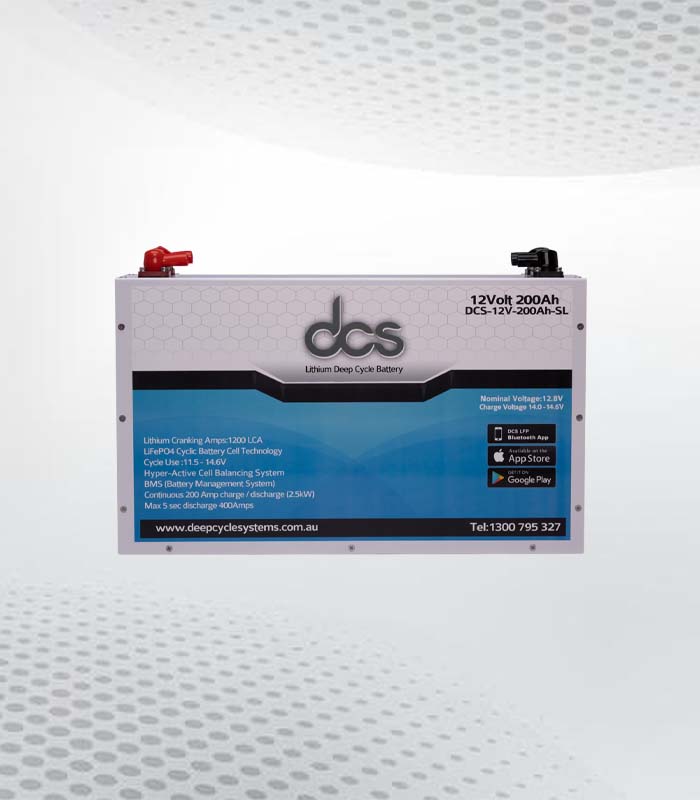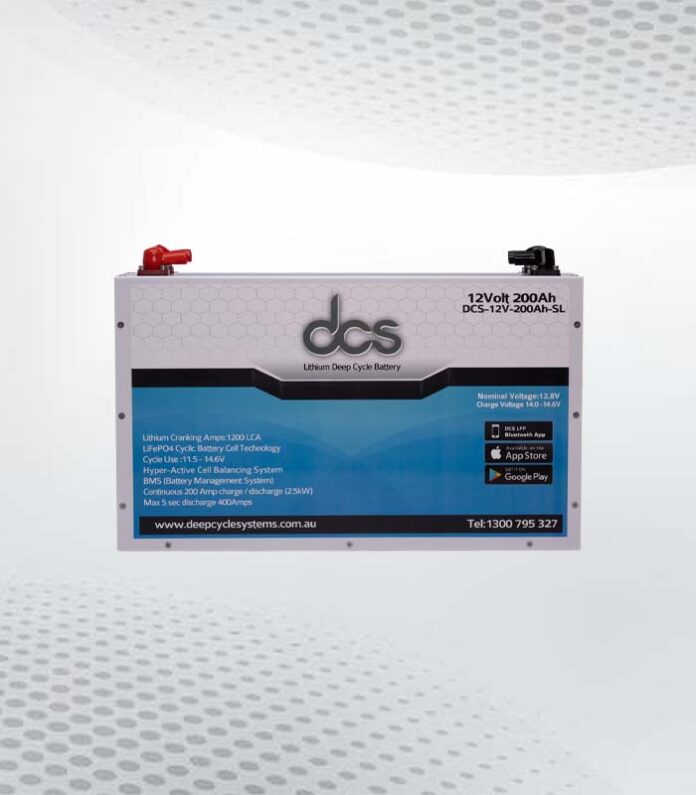In today’s technologically advanced era, the quest for efficient and durable energy solutions is more critical than ever. Among the plethora of options available, the 200-ah battery stands out as a robust power source capable of enhancing the performance and reliability of various devices. Whether you’re powering a recreational vehicle, a solar panel system, or high-demand industrial machinery, understanding the benefits and proper maintenance of a 200 amp battery can significantly impact your energy usage and efficiency.
Understanding the Basics of a 200-ah Battery
A 200-ah battery, measured in Ampere-hours (Ah), indicates its ability to deliver 200 Amperes of current over the course of one hour. This metric is essential for assessing the energy storage capacity of a battery, giving a clear indication of how long it can power devices before needing a recharge.
At its core, the 200-ah battery contains a chemical energy reserve, converted into electrical energy to power various applications. These batteries are primarily found in lead-acid, lithium-ion, or AGM (Absorbed Glass Mat) variants, each with distinct advantages and suitable for particular uses. Lead-acid batteries are valued for their cost-effectiveness and reliability, making them a staple in automotive and backup power applications.
In contrast, lithium-ion versions offer a higher energy density and a lower self-discharge rate, making them ideal for more demanding or portable applications. AGM batteries, with their fibreglass mat separators soaked in electrolyte, provide superior power and durability in a maintenance-free package, favoured in marine and off-grid solar applications.
Understanding the chemical composition and associated benefits of each type is crucial in selecting the right 200-ah battery for your specific needs, ensuring that it aligns with the performance requirements and environmental conditions of the intended application.
The Versatility of 200ah Batteries Across Various Applications
The broad adaptability of 200Ah batteries across a diverse range of applications is a testament to their robust energy storage capabilities. From recreational vehicles (RVs) that demand a reliable source of power for long journeys to critical medical equipment requiring uninterrupted electricity, these batteries provide the backbone for a multitude of essential services.
In the realm of renewable energy, particularly solar-powered systems, 200Ah batteries serve as the cornerstone for storing excess energy generated during peak sunlight hours, ensuring a steady supply during the night or cloudy days.
Furthermore, their applicability extends to industrial settings, where heavy machinery and emergency backup systems rely on the sheer power and endurance these batteries offer. The maritime industry also benefits significantly, with 200Ah batteries powering navigation systems, onboard amenities, and safety equipment in boats and yachts, highlighting their indispensability in environments where failure is not an option.
In residential contexts, these batteries are increasingly employed in home energy storage systems, complementing solar installations to provide households with autonomy from the grid. This wide-ranging applicability underscores not just the versatility of 200Ah batteries, but also their role in facilitating a shift towards more sustainable and reliable energy solutions across sectors.
Tips for Optimising the Performance of Your 200ah Battery
Ensuring the longevity and efficiency of your 200Ah battery involves several proactive measures. Firstly, it is imperative to regularly check the battery’s terminals for corrosion or loose connections, which can impede performance. A mixture of bicarbonate of soda and water can be used to clean any corrosion, followed by a rinse with clean water and drying. Secondly, keeping the battery at an appropriate charge level is crucial; overly discharging a battery can significantly shorten its lifespan. Aim to keep the charge between 50% and 80% for optimal performance.
Temperature plays a vital role in the health of a 200-ah battery. Excessive heat can accelerate degradation, while cold temperatures can reduce its capacity. Where possible, store and operate the battery within manufacturer-recommended temperature ranges. Utilising a temperature-compensated charger can adjust the charging voltage based on temperature, further protecting the battery.
For batteries used in cyclic applications, such as solar energy storage, implementing a regular, complete discharge followed by a full recharge can help prevent the memory effect, especially in lead-acid and NiMH batteries, ensuring a consistent capacity over time.
Lastly, for those batteries that permit, checking and maintaining the electrolyte level can prevent damage from low fluid levels. However, this is typically more relevant for lead-acid batteries and less so for sealed units like AGM or lithium-ion batteries, which require minimal maintenance.
Following these guidelines will not only optimise the performance of your 200-ah battery but also extend its service life, making it a reliable power source for your applications.
Comparing 200ah Batteries with Other Battery Types
When evaluating the suitability of a 200-ah battery against other battery types, it’s pivotal to consider factors like energy density, lifecycle, and cost-effectiveness. Compared to smaller capacity batteries, the 200Ah variant offers a significantly larger energy reserve, making it more adept at handling long-duration applications or high-demand scenarios.
On the lifecycle front, the durability of 200Ah batteries, particularly those of the lithium-ion variety, often surpasses that of lower capacity counterparts. With a higher tolerance for charge-discharge cycles, these batteries tend to offer a longer service life, thereby reducing the total cost of ownership over time despite their initially higher investment.
Interestingly, when juxtaposed with high-capacity batteries beyond the 200Ah mark, considerations such as physical size, weight, and diminishing returns in terms of cost per Ah become increasingly relevant. Larger batteries may provide extended runtimes but often at the expense of increased costs, logistical challenges in installation, and potentially underutilised capacity in regular operations.
Understanding these distinctions is crucial for making an informed decision tailored to the specific needs and constraints of your application, ensuring that the chosen battery not only meets but exceeds expectations in terms of performance, longevity, and overall value.
The Future of Energy Storage and the Role of 200ah Batteries
As the global emphasis on sustainable energy sources intensifies, the trajectory for 200Ah batteries within this evolving landscape is particularly promising.
These batteries are poised to play a pivotal role in bridging the gap between renewable energy production and the consistent, reliable energy supply demanded by contemporary lifestyles. The expansion of electric vehicles (EVs), coupled with an uptick in residential and commercial solar installations, underscores the growing reliance on robust, high-capacity batteries.
Future advancements in battery technology, particularly in enhancing energy density and reducing charging times, are set to elevate the performance parameters of 200Ah batteries. Such progress could potentially democratise access to clean energy solutions, especially in remote or underdeveloped regions lacking traditional power infrastructure.
Moreover, the integration of smart technology with 200-ah battery systems is anticipated to yield more efficient energy management strategies, enabling users to optimise their energy usage and contribute to grid stability.
Equally important is the ongoing research into alternative materials and production methods aimed at reducing the environmental impact of battery manufacture and disposal. This focus on sustainability is expected to foster the development of more eco-friendly 200Ah batteries without compromising their efficiency or reliability.
Key Considerations When Purchasing a 200-ah Battery
When embarking on the acquisition of a 200-ah battery, it’s paramount to scrutinise a handful of essential factors to ensure the purchase aligns with your specific requirements. Capacity is merely the tip of the iceberg; delve deeper into the battery’s type, for instance, lithium-ion, AGM, or lead-acid, as each variety offers distinct advantages and potential drawbacks depending on your application.
The battery’s life expectancy and cycle count play a critical role, especially in applications demanding longevity and durability. A battery with a high cycle count may carry a heftier upfront cost but can prove more economical in the long run. Additionally, consider the battery’s charging time and energy efficiency to ascertain how it will fit into your daily operations or energy system.
Compatibility with your existing system is another vital aspect. Ensure the battery voltage and capacity are congruent with your device’s or system’s requirements to prevent mismatch issues that could lead to underperformance or damage.
The environmental conditions in which the battery will operate cannot be overlooked. Batteries have optimal operating temperature ranges, and stepping outside these boundaries can significantly impact performance and lifespan. Lastly, the warranty and after-sales support offered by the manufacturer can provide peace of mind, offering recourse should any issues arise with your 200-ah battery post-purchase. Considering these factors meticulously will guide you towards making an informed decision that best suits your energy needs.
How to Properly Maintain and Extend the Life of Your 200-ah Battery
Maintaining your 200-ah battery requires a consistent routine to ensure it operates at peak performance for as long as possible. Begin by conducting regular inspections to identify any signs of wear, damage, or leakage, which could compromise the battery’s integrity. It’s essential to ensure that the battery is kept in a clean, dry, and well-ventilated area to prevent overheating and to minimise exposure to extreme temperatures, which can significantly affect its efficiency and lifespan.
Charge management is a critical aspect of maintenance. Avoid allowing the battery to fully deplete before recharging, as this can cause undue stress and shorten its lifespan. Instead, implement a charging regime that maintains the battery at an optimal level of charge, ideally between 50% and 80%. Use a smart charger that can adapt to the battery’s needs, providing a balanced charge that prevents overcharging and prolongs battery life.
For batteries in storage, it is imperative to periodically charge them to keep them from entering a state of deep discharge, which can be detrimental. Aim to charge these batteries every three to six months to maintain their health and readiness for use.
Finally, for batteries that require it, ensure that the water levels are maintained and only use distilled water for topping up. This is particularly relevant for lead-acid batteries. Adhering to these maintenance practices will significantly contribute to maximising the performance and extending the life of your 200-ah battery, ensuring that it remains a reliable energy source for your needs.
FAQs
Is it feasible to integrate a 200Ah battery into my domestic solar setup?
Certainly, 200Ah batteries are highly suited for domestic solar setups, offering substantial energy storage capacity to harness solar power efficiently.
What is the expected runtime of a 200Ah battery when fully charged?
The runtime varies based on the connected load. For instance, a 200Ah battery could potentially run a device consuming 100 watts for about 20 hours, factoring in efficiency losses during conversion.
Do 200Ah batteries contribute to environmental sustainability?
Batteries do have an environmental footprint, yet their application in renewable energy setups contributes positively by diminishing dependency on fossil fuels. Additionally, advancements in battery recycling are enhancing their eco-friendliness.
Is it possible to link several 200Ah batteries together for increased power or capacity?
Indeed, you can connect multiple 200Ah batteries in series to elevate the voltage or in parallel to boost the capacity. It’s crucial, however, to ensure that the batteries are compatible and to adhere strictly to safety protocols during the process.
Bottom Line
The efficacy and resilience of a 200Ah battery render it an essential component across a myriad of applications, spanning from residential to industrial and beyond. With its substantial storage capacity, this type of battery plays a pivotal role in enhancing both the performance and dependability of devices and energy systems alike. Key to reaping the full benefits of a 200-ah battery lies in a nuanced understanding of its characteristics, coupled with diligent maintenance and optimisation of its use.
| Other Good Articles to Read |
| Blogs-Nation |
| Blogs-Peoples |
| bryan smith blogs |
| intellect blogs |
| the fault in our blogs |
| oz forums |
| recruitment blogs |
| zet blogs |
| id blogs |
| blog studio legale |
| blogs map |
| Related Business Listings |
| Directory Submissions |
| Regional Directory |

